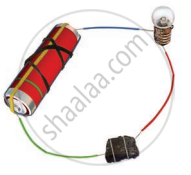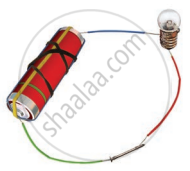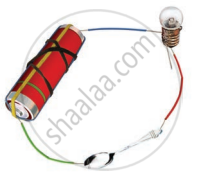Advertisements
Advertisements
प्रश्न
Paheli set up an experiment using liquid A in the beaker as shown in the figure. She observed that the bulb glows. Then, she replaced the liquid A by another liquid B. This time the bulb did not glow. Boojho suggested replacing the bulb by an LED. They observed that the LED glows. Explain.
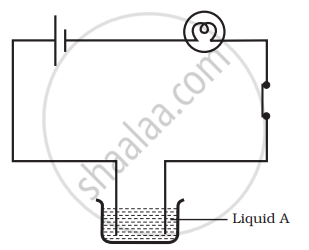
उत्तर
Liquid A is a good conductor of electricity and it allows the maximum current to pass through it which is sufficient to glow the bulb.
But when it is replaced by another liquid B, bulb does not glow because the current through liquid B could be weak and therefore unable to make the bulb glow.
But the small current which is passing through B is sufficient to glow a low voltage LED, so it glows.
APPEARS IN
संबंधित प्रश्न
The process that you saw in the image is used for the purification of copper. A thin plate of pure copper and a thick rod of impure copper are used as electrodes. Copper from impure rod is sought to be transferred to the thin copper plate. Which electrode should be attached to the positive terminal of the battery and why?
Boojho and Paheli performed experiments taking similar bulbs and cells but two different solutions A and B as shown in the figure.
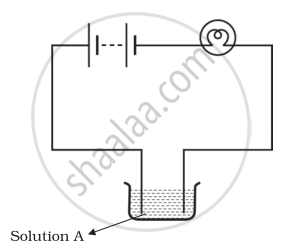 |
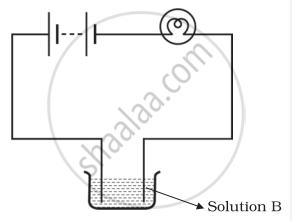 |
| Boojho's Experiment | Paheli's Experiment |
| (A) | (B) |
They found that the bulb in the set up A glows more brightly as compared to that of the set up B. You would conclude that
When electric current is passed through a conducting solution, there is a change of colour of the solution. This indicates
The object to be electroplated is taken as ______ electrode.
Electroplating of ______ is done on objects like water taps and cycle bell to give them a shiny appearance.
Paheli wants to deposit silver on an iron spoon. She took silver nitrate (AgNO3) solution in a beaker and set up a simple circuit for electroplating. Which terminal of the battery should the spoon be connected to? What material should the other electrode be made of?
Why is tin electroplated on iron to make cans used for storing food?
Observe the following circuits carefully. In which circuit will the bulb glow? Write Yes or No in the blank space provided along each of the circuit given in the figure.
|
(a) |
Piece of coal |
______ |
|
(b) |
Iron nail |
______ |
|
(c) |
Eraser |
______ |
|
(d) |
Steel spoon |
______ |
Name the process which shows the chemical effect of electric current?
What are anodes and cathodes?
